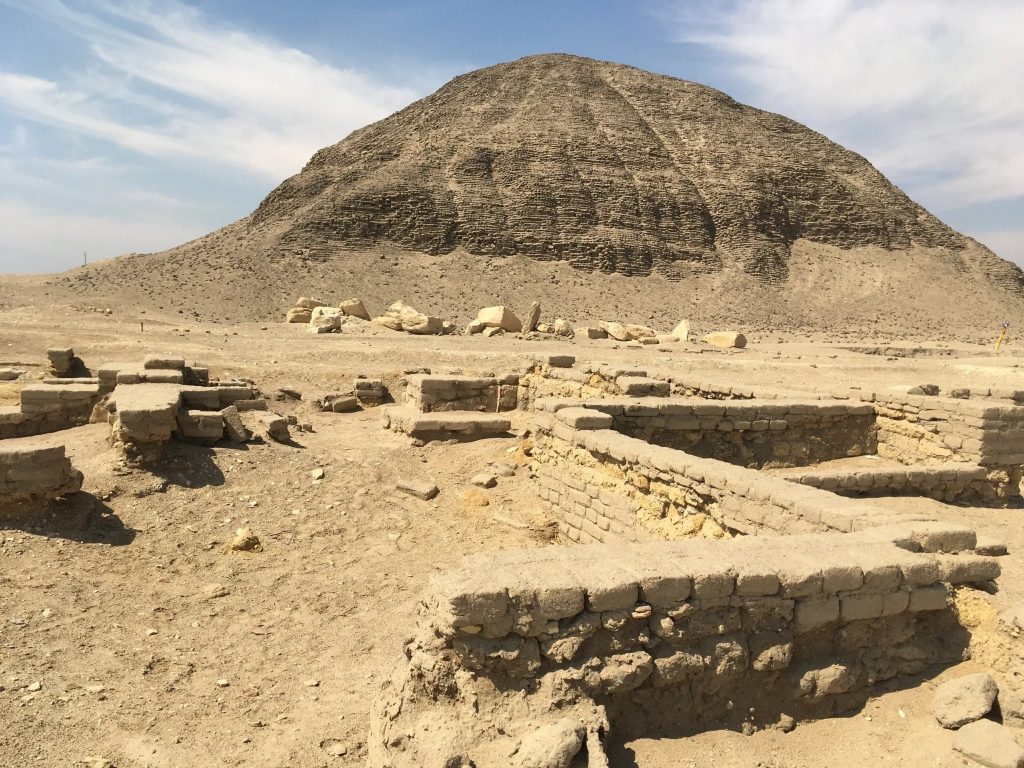
If you liked this research article please consider supporting the author, by scrolling down for various options, on the main page or sharing a link to this blog post or blog www.isutrikanda.com on your social media so others can also read it. You can also follow me on X @stijnvdhoven Thank you!
Recently the “Hawarra labyrinth” is getting traction again. An original mission to find it by Louis de Cordier and recently recovered by alternate history YouTubers such as UnchartedX , Jahanna James and others.
Even though “Haueris”, the Greek name for Hawarra means “great mansion”,studying what is known shows that it’s unlikely to be at Hawarra for numerous reasons such as date, proximity to the lake and a general misinterpretation of strabos sources on it’s location.
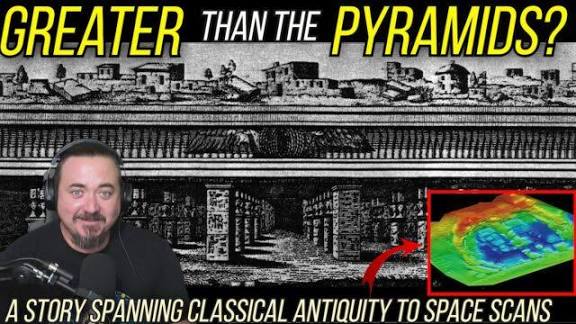
There is not much research, originality or genuine new contributions to history, in the (YouTube) alt history scene. Although some videos, such as Unchartedx, are of good quality and great at bringing these subjects to a large audience. The video from UnchartedX had over 2 million views after just 1 month.
The most used image to (incorrectly) visualize or depict the labyrinth is, in fact, the temple of Denderra, as per the comment under the original picture, “Tentiris”.
“Tentiris” (Tentyris or Tentyra) is the ancient name for the Egyptian town of Dendera, the Dendera Temple Complex.
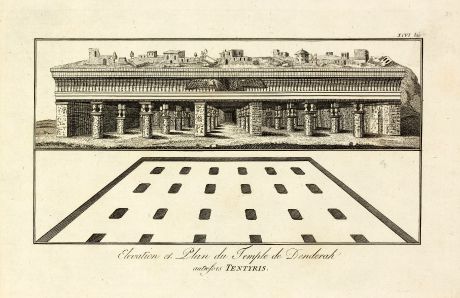
Even though a village on top of an ancient underground structure, is a plausible reality of what remains today. Overbuild, with underground structures remaining.
This article aims to contribute to the topic with new thought and genuine research, by studying the known sources.
Hawarra was only chosen as a potential site of the labyrinth, due to the mention in the records, of a pyramid at the corner of the labyrinth. It was the only site with a pyramid and close to the distance instructions from Strabo. It did have later settlement on the site but no remains of a huge palace.
The link to the Hawarra site was done by a Jesuit priest in 17th century and is not in the ancient records as such.
There are earlier maps, such as Aegyptus Antiqua, Abraham Ortelius 1584, but these place the labyrinth on the other side of the canal and such ancient maps are mainly based on the known historic sources such as Herodotus, Strabo etc.
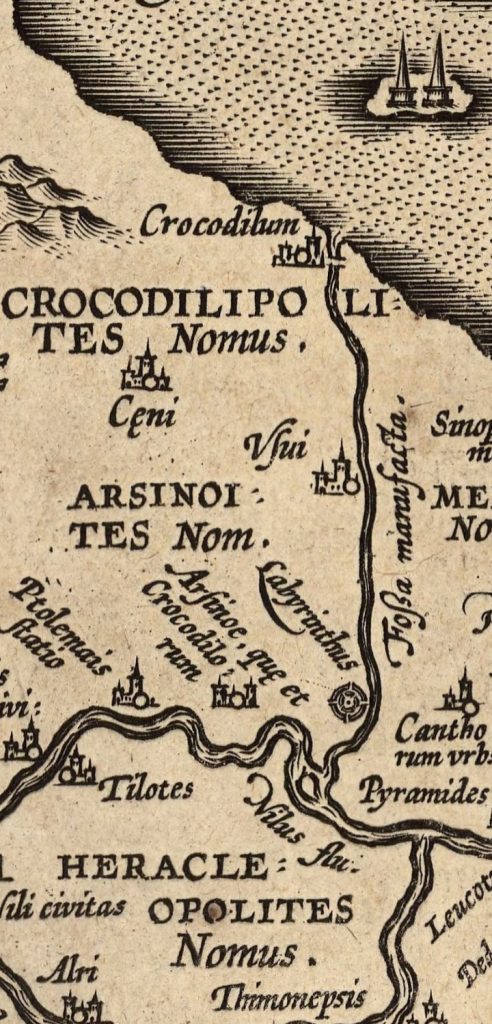
Even Flinders Petrie questioned Hawarra as site of the labyrinth in his book: Hawara, Biahmu, and Arsinoe https://books.google.co.za/books/about/Hawara_Biahmu_and_Arsinoe.html?id=Y0kXAAAAYAAJ&redir_esc=y) chec
as shown in the below exempt.
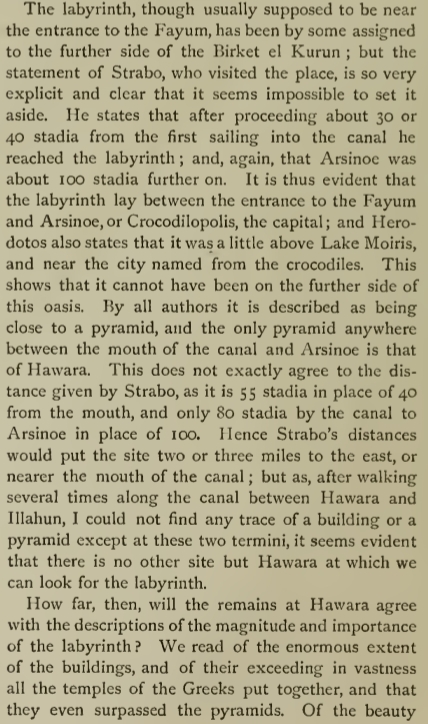
Strabo, might have gotten his location wrong and indeed thinking it was Hawarra or visited Hawarra instead of the labyrinth itself.
Still people went looking for it at Hawarra and it has stuck in modern times as “the site of the labyrinth”.
it could also very possibly be that people have looked from the wrong direction based on the lake size. Around 30-40 stadia, 5-7 km to the mouth of the canal that feeds the lake and then another 100 stadia, 18km , to crocodilopolis. This is about right, if you calculate from the proposed site, later in this article. You just measure from the other way.
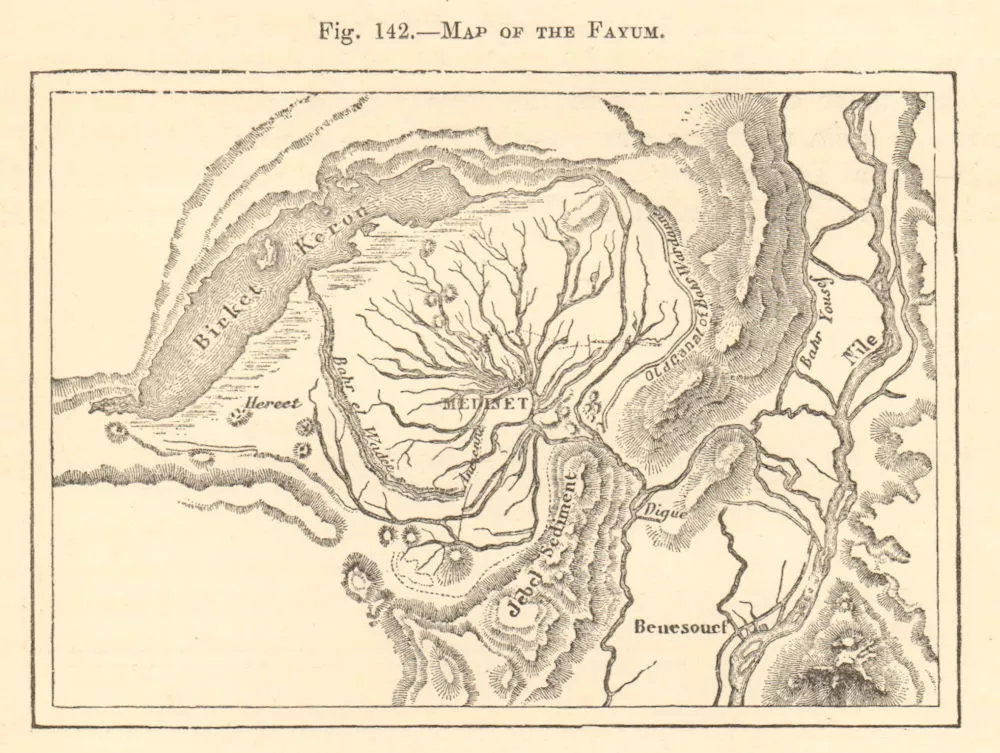
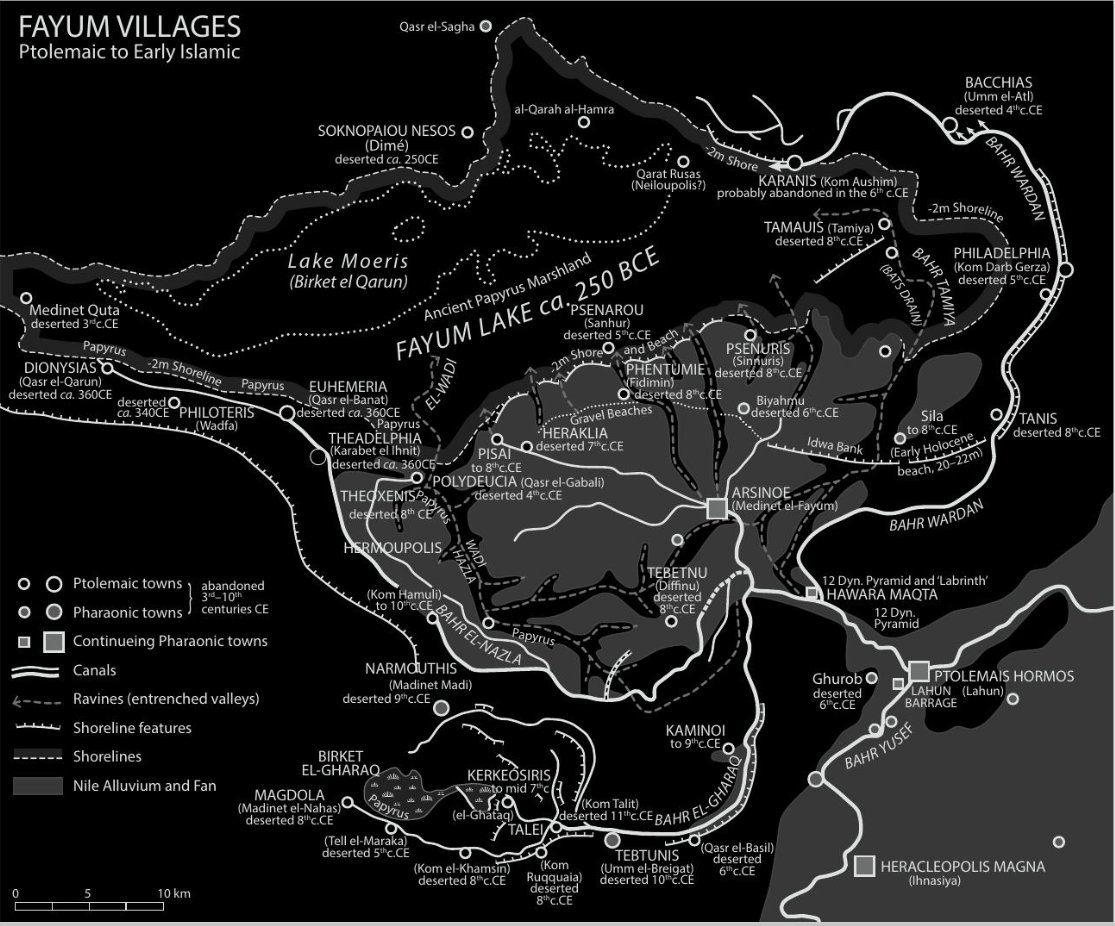
In terms of the labyrinth with the pyramid, it was said: “TO this” was a way made underground. Not “THROUGH this”. This could suggests, an underground pyramid, as part of the underground structure and not access to the labyrinth via the (Hawarra) pyramid, which with it’s small passage might be unlikely. Huge shafts are required for large underground construction, such as present at Saqarra Djoser pyramid, unless a huge hole was dug first. It could also just refer to the corner of the area where the labyrinth is (Fayum) and not necessarily close proximity, as in next to it.
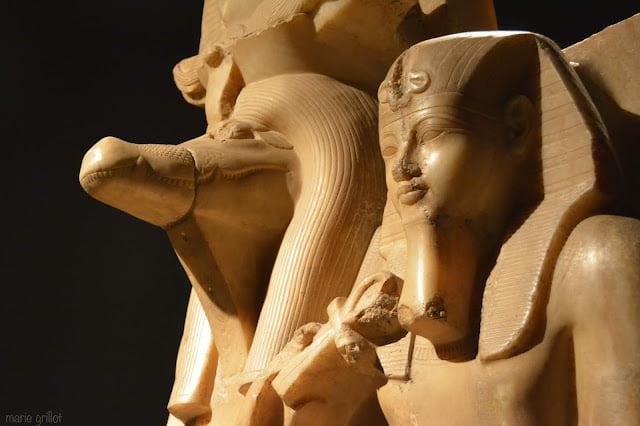
Image of Amenhotep III, 9th Pharao of 18th dynasty and Sobek, pharaoh’s are often seen with Sobek. The crocodile was a solar animal, resting on the east bank at dawn and at west bank at dusk when after it slit into the Watery depths. The crocodile mummies together with the tombs of the rulers are mentioned in the sources.
It was the emperor Severus Optimus who was one of the last recorded to have visited the labyrinth in “Historia Augusta”
“For he visited Memphis, Memnon,116 the Pyramids, and the Labyrinth,117 and examined them all with great care.”
source: https://penelope.uchicago.edu/Thayer/E/Roman/Texts/Historia_Augusta/home.html
It’s noteworthy that multiple large structures, such as the Seti temple at Abydos where called “memnonium”. Memnon might be a term for or related to a generic term for “Pharao” or “ruler” and that “memnonium” refers to the temple structures they build, but such is speculation on the authors behalf.
The Colossi of Memnon are two massive statues of Pharaoh Amenhotep III located in Thebes, Egypt. Built around 3,400 years ago as guardians of his now-destroyed mortuary temple, one statue was famously known for “singing” at dawn after a 27 BC earthquake.
Although Amenathat III , 6th king of 12th dynasty, had significant presence across the Fayum in his dynasty, it is very clear from the writings that the labyrinth palace tomb was a much later construction.
The writings match the transition period of the 26th to 25th dynasty under Pharao Psammetichus, Psamtik 1, which dates the labyrinth palace at 650bc. It was constructed after the pyramids of Biahmu, the tombs of king Moeris as noted by the same ancient sources.
The author wrote a paper im 2017 on the Biahmu pyramids as tombs of King Moeris.
https://www.academia.edu/124354807/Herodotus_lost_pyramids_and_tomb_of_King_Moeris
Concluding
Herodotus, often called the “Father of History,” lived from approximately 484 BCE to 425 BCE. He was the first to talk about the labyrinth.
When one studies the bulk of the total sources, it becomes clear that the labyrinth palace tomb was a construction as late as 26th dynasty, build by 12 kings who re-unified Egypt after the Ethiopian ruler (Nubian) in 25th dynasty.
The mentioned Psammetichus of Sais, as one of those 12 rulers,more accurately known as Psamtik I (664–610 BCE), was the founder and first pharaoh of the Twenty-sixth Dynasty of Egypt, also known as the Saite Dynasty. He came to power with the help of Greek and Carian mercenaries and established a period of revival in Egyptian art and religion.
This aligns with Psamtik 1 being one of those 12 kings. Dividing Egypt in 12 parts, after Ethiopian rule. The labyrinth seems a joined Sait rulers palace tomb that was seen as a labyrinth due to its size, rooms and passages.
It was Psammetichus or Psamtik 1 who was attributed as one of the last of those 12 kings. Hence they build a palace, together with underground tombs for themselves.
Hawarra is also not a likely location, due to size of lake at time of the Sait kings. Hawarra wasn’t anymore, by this time.
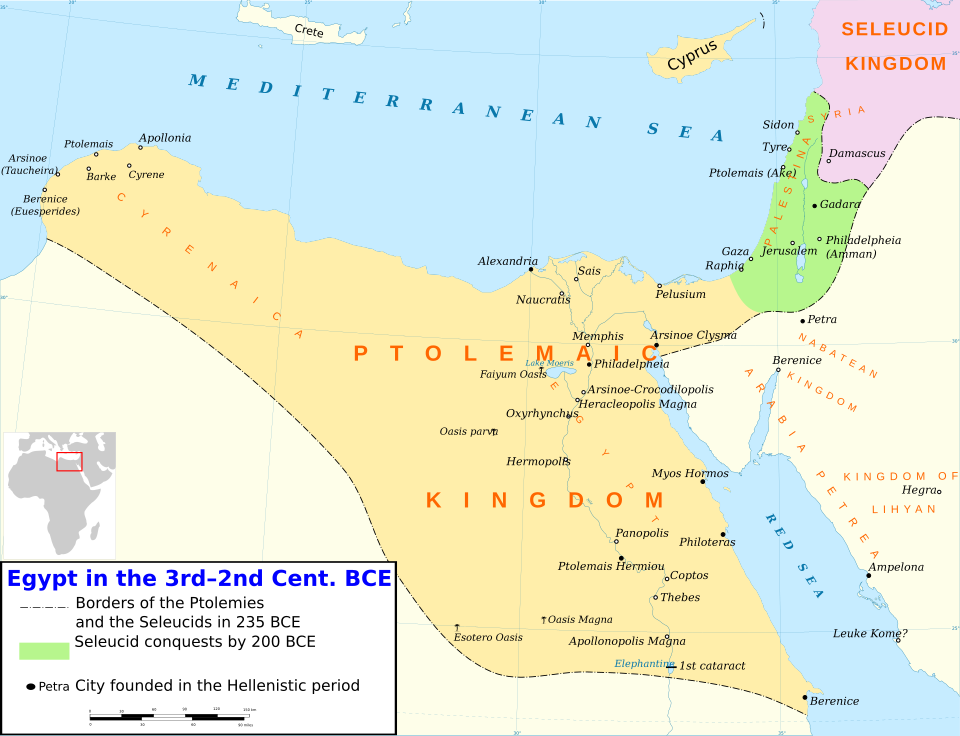
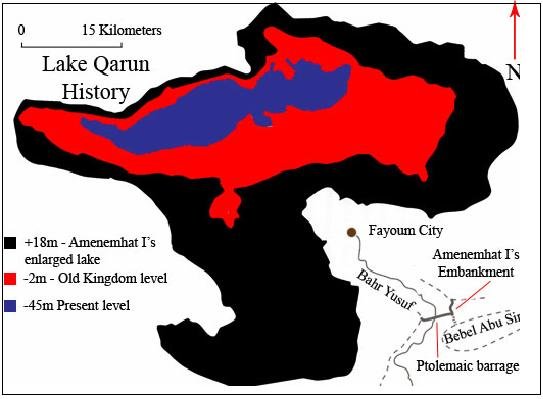
Or a general reuse of the site and existing pyramid to build their grandeur palace there. Not close to major water access and no harbour for all boats and visitors. Not a top location for a “joined government palace” to say.
To much Amenemhat III remains are at the site while no indication of remains from a huge 3000 room Sait period palace on the site.
This doesn’t mean there are no underground tunnels at Hawarra. It could be. But the author thinks if anything is found there it likely matches sites like under the Djoser pyramid.
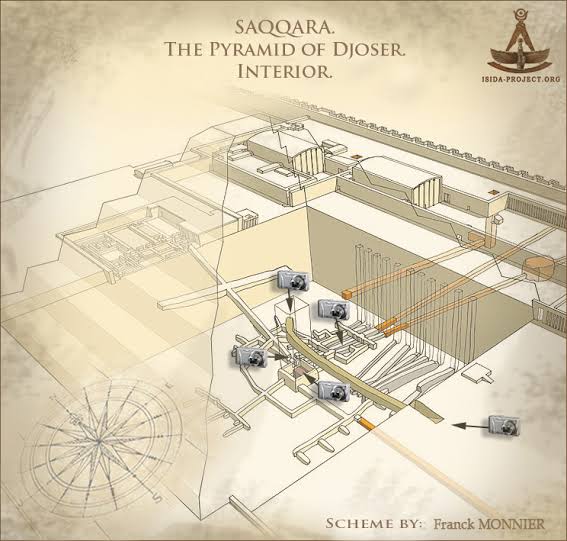
The overall accounts certainly do not favour Hawarra, or link to Amenemhat III, as these structures where there long before “the labyrinth” was constructed.
Thus it’s not an antediluvian bunker but if such is found, a joint underground tomb, that housed a palace above ground, a time capsule of the 26th dynasty.
During his research the authors research found other locations of interest to look for the large palace tomb that was described as a “labyrinth” in history and found two engravings that WERE depicted as “the temple of the labyrinth” in ancient sources unlike the earlier Denderra image. But no specific location was mentioned.
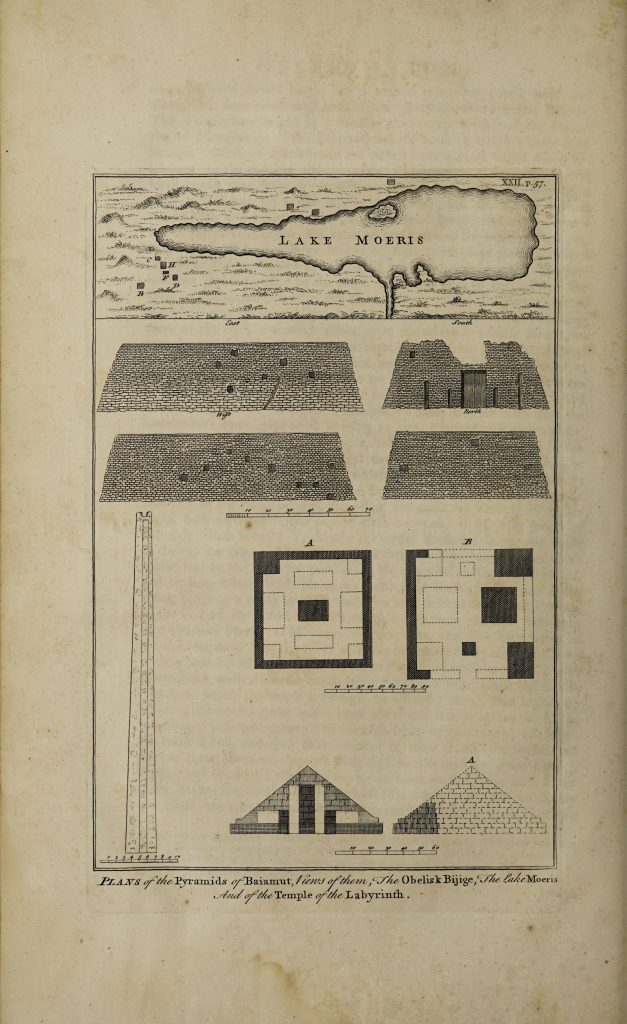
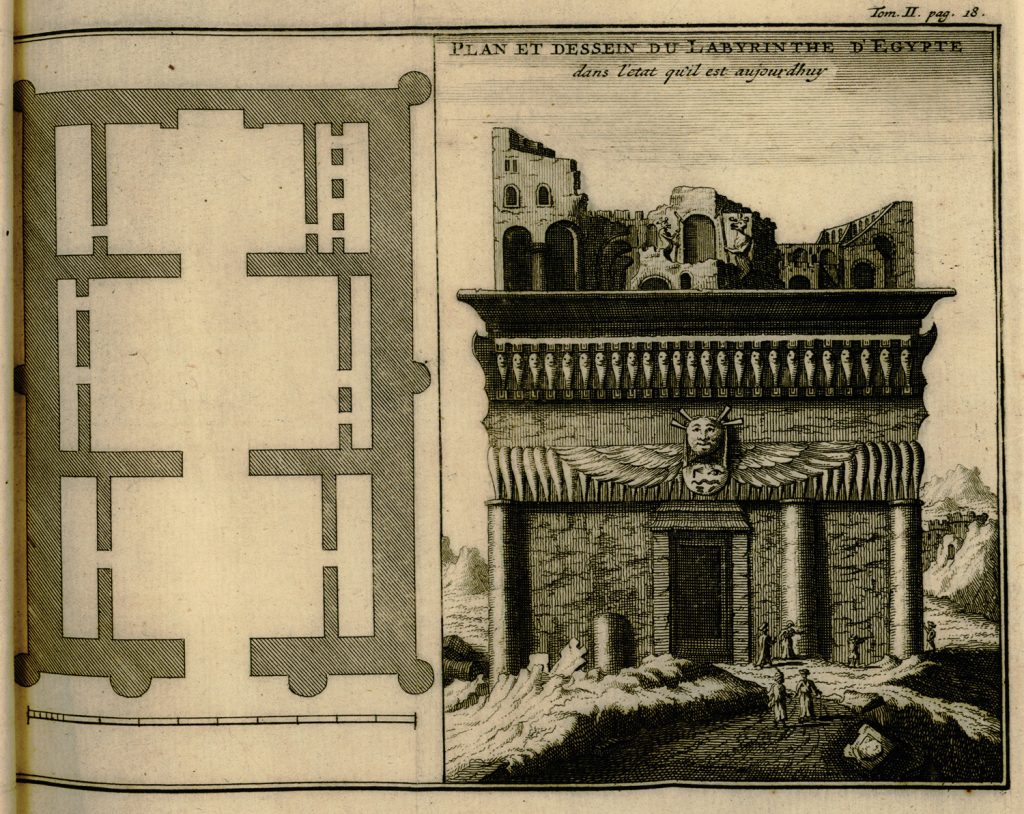
After some research in the Fayum region the author managed to identify which exact structure was depicted.
After that, via x user @Kanzfeldt I found other mentions of it online.
“Dyonisis”, the old Qasr El Qarun, or castle of Qaroon, was, at the lake side.
The following web article is here quoted in full, to prevent source loss, also with a link to the original article of http://www.atlasislamica.com

Qasr Qaroon
Close to Western edge of Lake Qaroon in Fayoum, Egypt, Qasr Qaroon marks the original location of the ancient town of Dionysias, where is it said Qaroon once lived

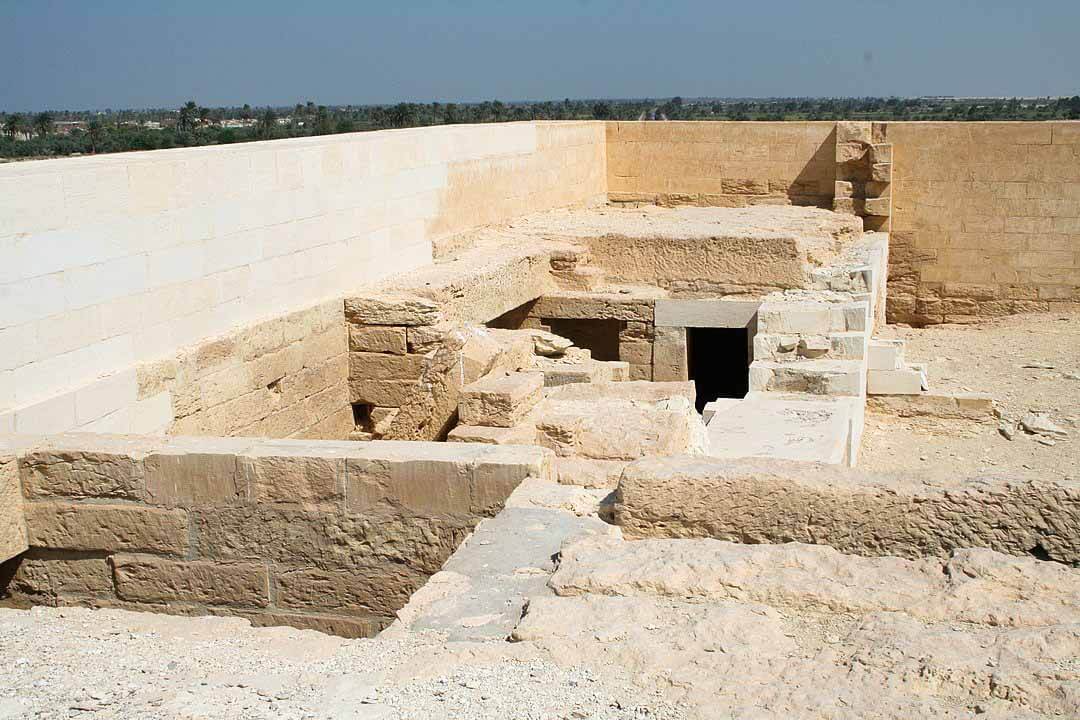
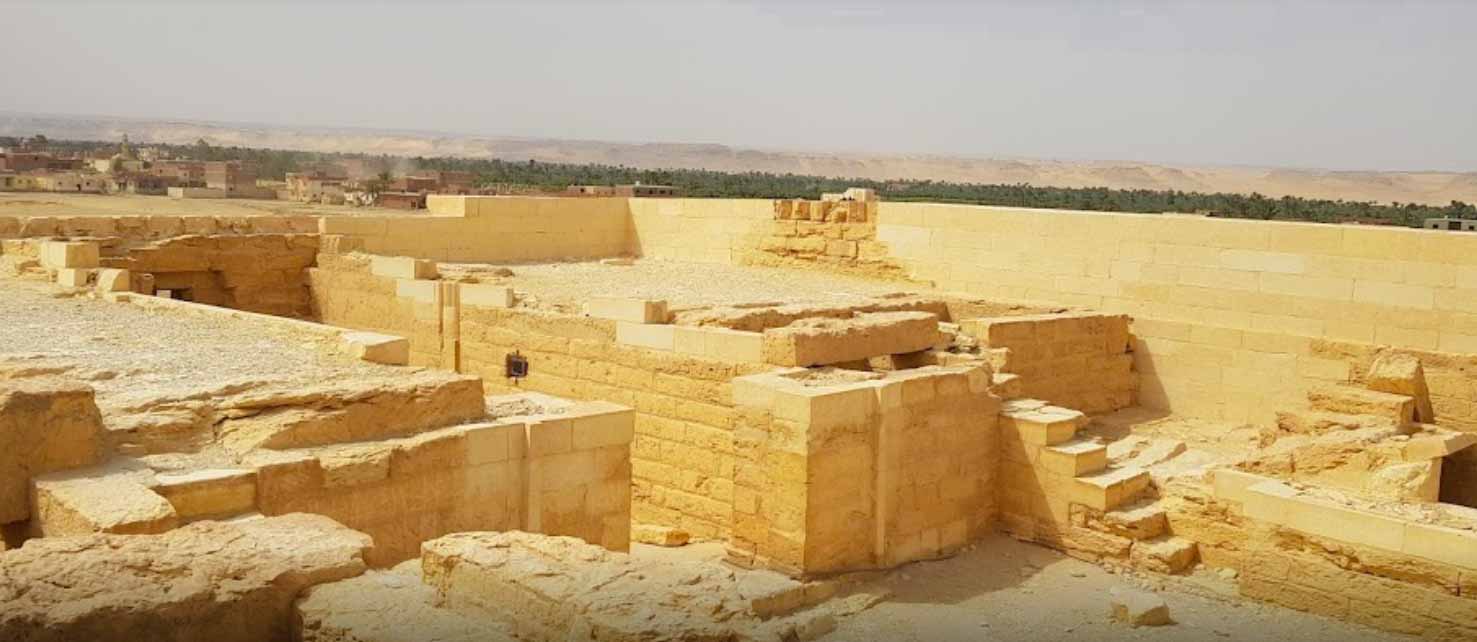
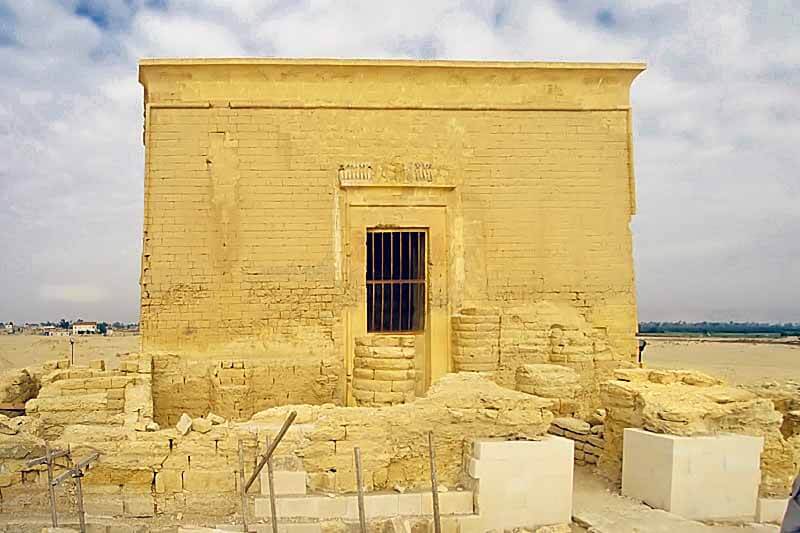
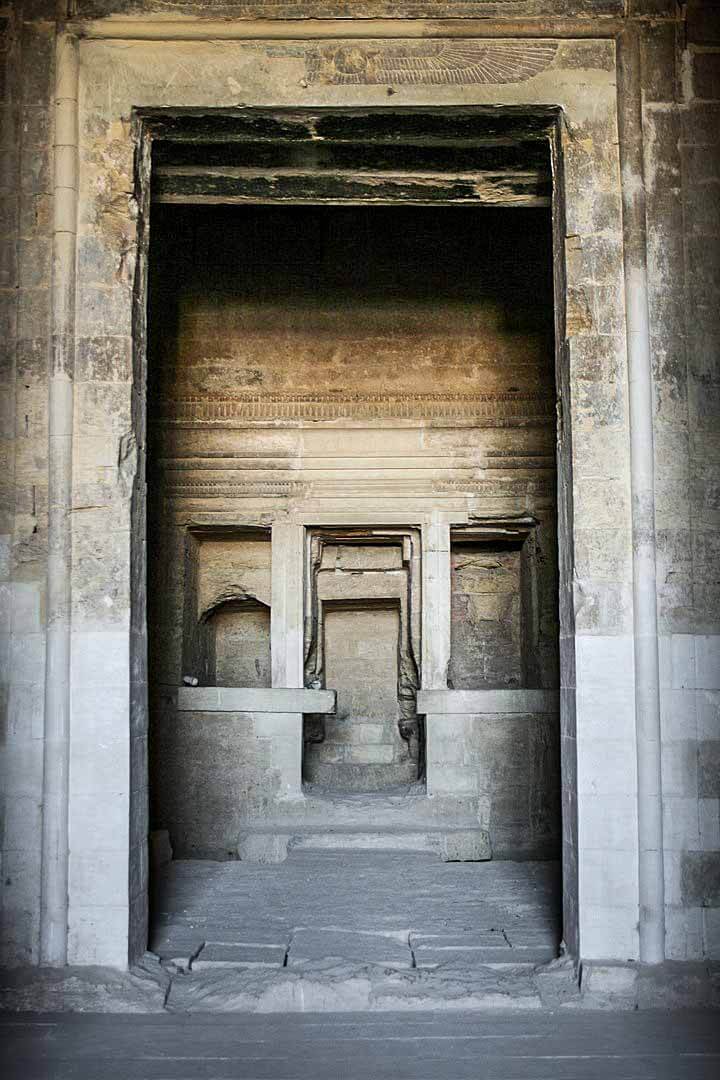
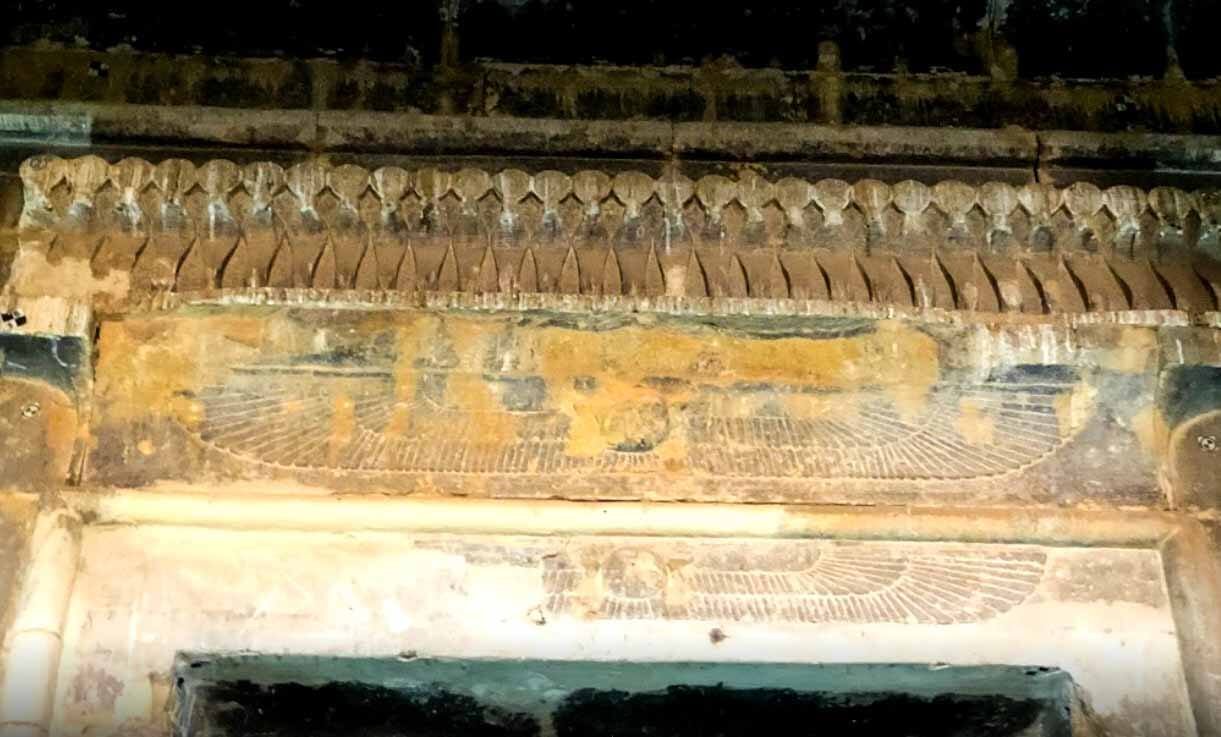
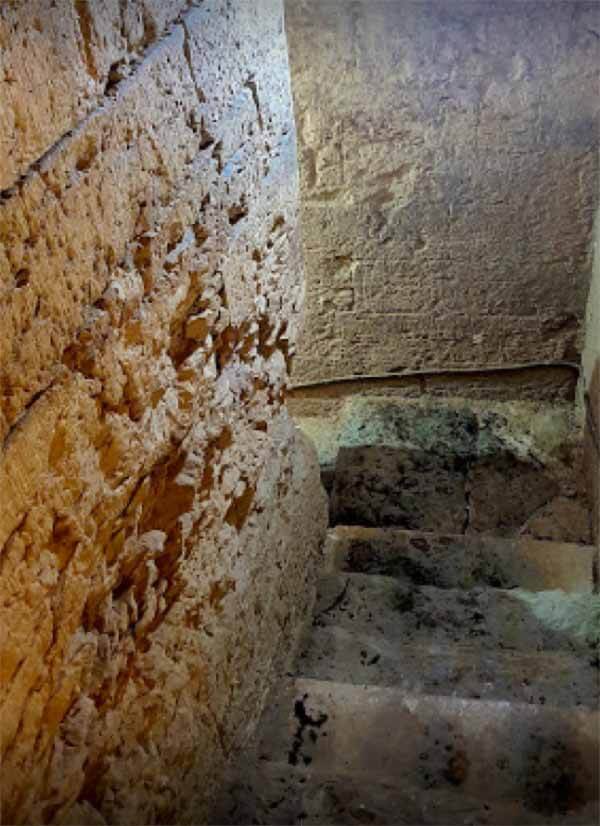

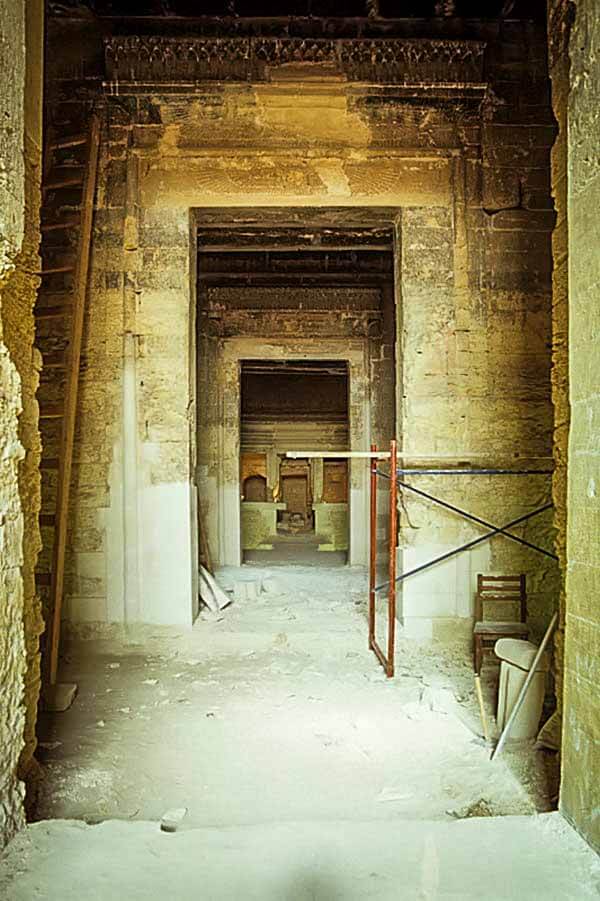
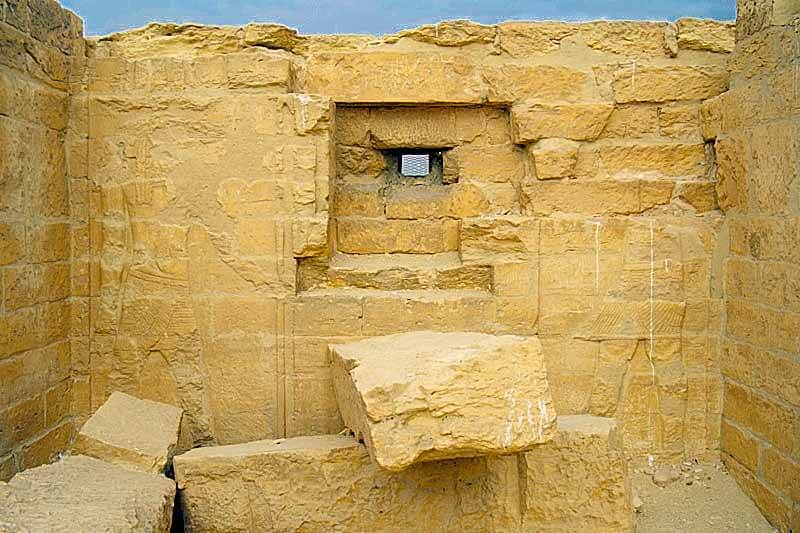
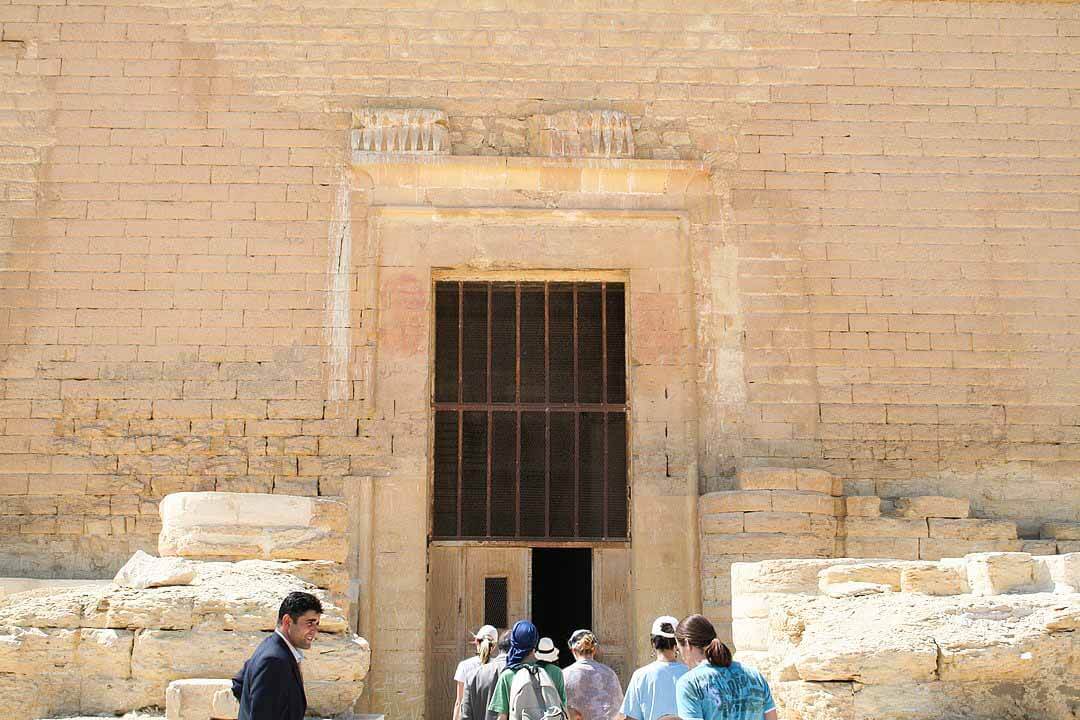
Qasr Qarun Archeological site
Coordinates: 29.405556, 30.418056
Near Qaroon lake, an ancient building called Qasr Qaroon, or Qaroon’s Mansion, is believed to be the house that Qaroon lived in as described in the Quran.
Underneath the building some ancient tunnels have been found that lead to the adjacent village.
Residents believe there are other tunnels that reach all the way to Alexandria and maybe even Memphis, the ancient Egyptian capital.
Doubts about the site
Historians have indicated that Qasr Qaroon and Qaroon lake has nothing to do with the historical Qaroon. Nor is there anything that proves that present day Qasr Qaroon was the location where Qaroon lived.
Some say this was one of the palace owned by Pharaoh
Qaroon – His Actions and Destruction (Narrated by Ibn Kathir)
Hz. Musa عليه اسلام began to face a difficult situation. He had to confront Firawn’s anger and his plots, while at the same time he had to deal with the mutiny of his people. In the midst of all this, Qaroon moved.
Qaroon was one of Hz. Musa’s عليه اسلام people. He was very rich and lived in a magnificent mansion. He wore only the most expensive clothes. Numerous slaves waited on him and he indulged in every known luxury. His enormous wealth made him arrogant. Qaroon treated the poor with contempt and told them that their poverty was due to their lack of intelligence.
He believed that what he owned was due to his own cleverness and business ability. Hz. Musa عليه اسلام reminded Qaroon to pay alms (zakat) on his wealth, a portion of which was rightfully due to the poor. Alms are compulsory upon all the believers.
Qaroon was annoyed by this advice and told Hz. Musa عليه اسلام that his being wealthy was proof that he was favored by Allah, Who approved of his life-style and increased his wealth daily. Hz. Musa عليه اسلام argued with him and warned him of the result of his wicked thoughts.
When Qaroon did calculate the alms due on his wealth, he was shocked at the large amount he had to part with. He not only refused to give alms, but spread a rumor that Hz. Musa عليه اسلام had invented the law of zakat for his own gain. He even bribed the people to oppose Hz. Musa عليه اسلام and to spread wicked rumors about him. Allah warned Hz. Musa عليه اسلام of Qaroon’s plot. Hz. Musa عليه اسلام appealed to Allah to punish him for his stinginess and for defying His laws.
Allah’s anger fell on Qaroon. The earth opened up and swallowed him, his mansion and all his wealth, as if he had never existed.
Qaroon, who was in the habit of counting and recounting his riches, had also been buried along with his riches.
This made the people realize that he was not to be envied but pitied for his lack of faith in Allah.
Temple
One of the most interesting aspects of the temple is that its roof is still in place, offering one a sense of the atmosphere that once prevailed.
The interior of the temple is a labyrinth of rooms, stairways, corridors, cellars, tunnels and upper rooms of all sizes and at different levels – six stories in total, three underground and three above it.
Specifically, there are fourteen rooms on either side of central corridor that lead to three chapels. There is a stairway that leads you to the roof.
It is said that every year at 21 December, the sunrise illuminates the sanctuary of the temple.
While the temple looks small from outside, it is really big from inside. Half of the temple was buried under sand, and thus was partly preserved. Know This. It’s very close to the city and doesn’t need much time to reach there. Don’t forget to go upstairs and check out the drawing on the wall. Also, you should watch your steps. Because apparently some places in the temple is really dark.
Many believe that the name Qarun can be attributed to the protagonist of a story in the Quran. The Qarun of the story was an opulent man, a contemporary of Moses, who is believed to have lived in Egypt, and had all his mansions and possessions flooded as a punishment for his sins. Fishermen and many others who live by the lake believe that Qarun’s treasures lurk beneath the surface of the present day lake, and that they are guarded by a fairy or a mermaid. Over the years stories have been told of people diving for the treasures but so far all attempts at recovery have been in vain. Source: https://www.dailynewsegypt.com/2012/12/11/the-mysteries-of-qarun-lake/
Yes, the ancient etchings displaying the temple of the labyrinth and in article “palace of the Pharao”, was Qasr El Qaroon or at least the site of it.
Known for its labyrinth interior and multiple levels. There is also a ptolomaic village and the building was build by none other than the half brother of Alexander the great.
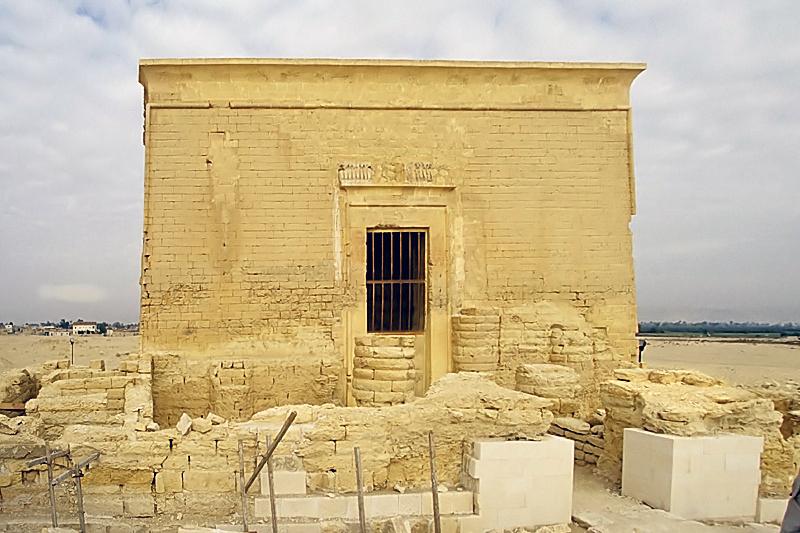
Even though it’s said ancient travellers mistaken this building for the labyrinth, it’s newly discovered solar alignment at the 21st of December and it’s original attribution to Sobek might warrant investigation if at least the underground part of the palace described as the labyrinth might be at this location via modern lidar and GPR scanning of this site in the Fayum.
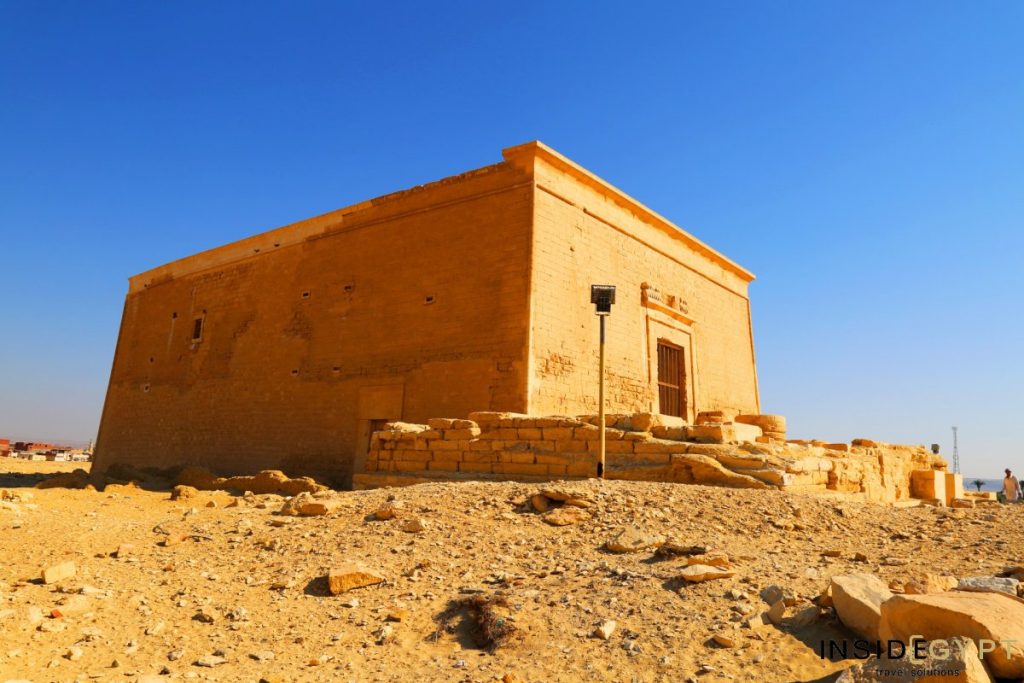
Qasr El Qaroon
Even though the current site does not immediately show the remnants of a great palace, 1 stade by 1 stade, this could have been destroyed and swallowed by the village which is also mentioned with the sources as being next to the palace.
The current temple, dated around 300bc, thus Ptolomaic and not Sait, might have been build to conceal the entrance to the subterranean structure perhaps still present. The date from Psamtik 1, 650bc to Herodotus 450bc are not far off for such after the top part was destroyed or stones repurposed which some accounts state it was used as a quarry.
In that way the old engravings where one sees old temples with buildings and villages on top might still hold some truth. The author thinks its at least worth a lidar scan and some ground penetrating radar archeological research considering how the ancients described the place as surpassing the pyramids and all the roman and Greek works in grandeur.
The numerous Ptolomaic sites around the lake are also telling of its importance in that period. It’s noteworthy that the sources speak about “coffered ceilings” which is a more Roman and greek style, thus matching the period the author dated the palace tomb labyrinth.
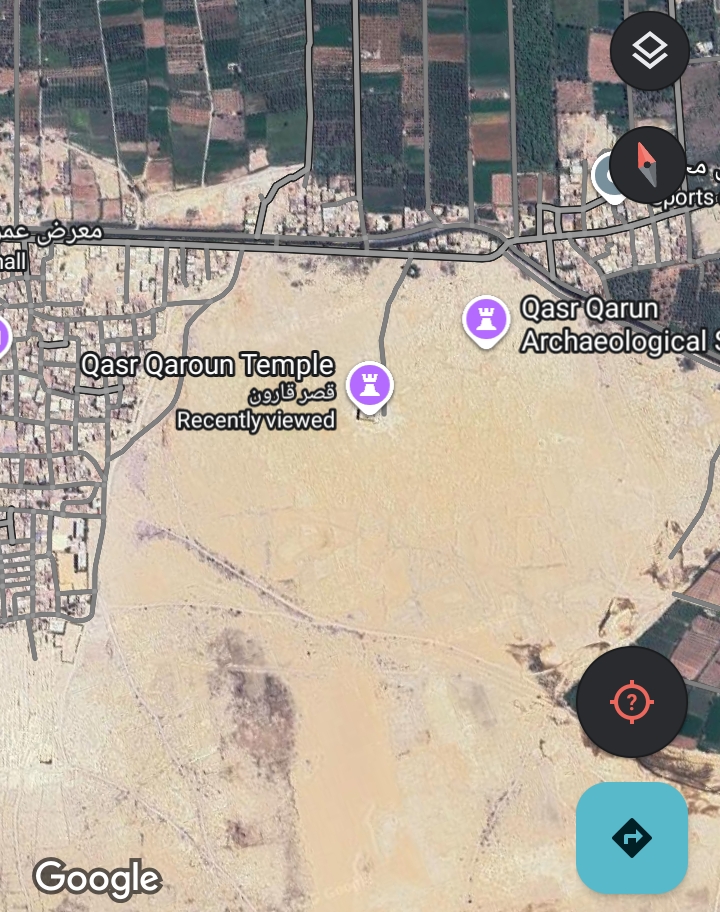
The holy quran states on an individual called Qaroon, that all his wealth and mansion was swallowed by the earth as if he never existed.
Could this be the place of the legendary palace tomb labyrinth? More modern research will have to be conducted on the site.
Stijn van den Hoven – October 4th, 2025
Historic Sources:
Herodotus – Book II: chapters 99‑182
https://penelope.uchicago.edu/Thayer/E/Roman/Texts/Herodotus/2B*.html#148
The priests told me that Mina was the first king of Egypt, and that first he
separated Memphis from the Nile by a dam. All the river had flowed close under the sandy mountains on the Libyan side, but Min made the southern bend of it which begins about an hundred furlongs above Memphis, by damming the stream; thereby he dried up the ancient course, and carried the river by a channel so that it flowed midway between the hills. And to this day the Persians keep careful guard over this bend of the river, strengthening its dam every year, that it may keep the current in; for were the Nile to burst his dykes and overflow here, all Memphis were in danger of drowning. Then, when this first king Min had made what he thus cut off to be dry land, he first founded in it that city which is now called Memphis — for even Memphis lies in the narrow part of Egypt — and outside of it he dug a lake to its north and west, from the river (the Nile itself being the eastern boundary of the place); and secondly, he built in it the great and most noteworthy temple of Hephaestus.
p164
After him came three hundred and thirty kings, whose names the priests recited from a papyrus roll.b In all these many generations there were eighteen Ethiopian kings, and one queen, native to the country; the rest were all Egyptian men.
p166
But of the other kings they related no achievement or deed of great note, save of Moeris, who was the last of them. This Moeris was remembered as having built the northern forecourt of the temple of Hephaestus, and dug a lake, of as many furlongs in circuit as I shall later show; and built there pyramids also, the size of which I will mention when I speak of the lake. All this was Moeris’ work, they said; of none of the rest had they anything to record.
__________________________________________
After the reign of the priest of Hephaestus the Egyptians were made free. But they could never live without a king, so they divided Egypt into twelve portions and set up twelve kings. These kings intermarried, and agreed to be close friends, undertaking not to depose one another nor to seek to possess one more than another. The reason of this agreement, which they zealously guarded, was this: at their very first establishment in their several lordships an oracle was given them that that one of them who poured a libation from a bronze vessel in the temple of Hephaestus (where, as in all the temples, it was their wont to assemble) should be king of all Egypt
Moreover they resolved to preserve the memory of their names by some joint enterprise; and having so resolved they made a labyrinth, a little way beyond the lake Moeris and near the place called the City of Crocodiles.
Though the pyramids were greater than words can tell, and each one of them a match for many great monuments built by Greeks, this maze surpasses even the pyramids.
It has twelve roofed courts, with doors over against each other: six face the north and six the south, in two continuous lines, all within one outer wall.
There are also double sets of chambers, three thousand altogether, fifteen hundred above and the same number under ground. We ourselves viewed those that are above ground, and speak of what we have seen; of the underground chambers we were only told; the Egyptian wardens would by no means show them, these being, they said, the burial vaults of the kings who first built this labyrinth, and of the sacred crocodiles.
Thus we can only speak from hearsay of the lower chambers; the upper we saw for ourselves, and they are creations greater than human.
The outlets of the chambers and the mazy passages hither thither through the courts were an unending marvel to us as we passed from court to apartment and from apartment to colonnade, from colonnades again to more chambers and then into yet more courts. Over all this is a roof, made of stone like the walls, and the walls are covered with carven figures,
and every court is set round with pillars of white stone most exactly fitted together.
Hard by the corner where the labyrinth ends there stands a pyramid forty fathoms high, whereon great figures are carved.
A passage has been made into this underground.
______________
This “labyrinth” was a horseshoe-shaped group of buildings, supposed to have been near the pyramid of Hawâra (Sayce)
The lake shows for itself; for almost in the middle of it stand two pyramids, so built that fifty fathoms of each are below and fifty above the water; atop of each is a colossal stone figure seated on a throne. Thus these pyramids are a hundred fathoms high; and a hundred fathoms equal a furlong of six hundred feet, the fathom measuring six feet or four cubits, the foot four spans and the cubit six spans.
Strabo “geography” Book XVII
https://penelope.uchicago.edu/Thayer/e/roman/texts/strabo/17a3*.html
Near the first entrance to the canal, and on proceeding thence about thirty or forty stadia, one comes to a flat, trapezium-shaped place, which has a village, and also a great palace composed of many palaces.
As many in number as there were Nomes in earlier times; for this is the number of courts, surrounded by colonnades, continuous with one another, all in a single row and along one wall, the structure being as it were a long wall with the courts in front of it.
And the roads leading into them are exactly opposite the wall. In front of the entrances are crypts, as it were, which are long and numerous and have winding passages communicating with one another, so that no stranger can find his way either into any court or out of it without a guide.
But the marvellous thing is that the roof of each of the chambers consists of a single stone, and that the breadths of the crypts are likewise roofed with single slabs of surpassing size, with no intermixture anywhere of timber or of any other material.
And, on ascending to the roof, which is at no great height, one can see a plain of stone, consisting of stones of that great size;
and thence, descending out of the courts again, one can see that they lie in a row and are each supported by twenty-seven monolithic pillars; and their walls, also, are composed of stones that are no smaller in size.
At the end of this building, which occupies more than a stadium, is the tomb, a quadrangular pyramid, which has sides about four plethra in width and a height equal thereto. “Imandes” is the name of the man buried there.
It is said that this number of courts was built because it was the custom for all the Nomes to assemble there in accordance with their rank, together with their own priests and priestesses, for the sake of sacrifice and of offering gifts to the gods and of administering justice in matters of the greatest importance. And each of the Nomes was conducted to the court appointed to it.
Sailing along shore for a distance of one hundred stadia, one comes to the city Arsinoê, which in earlier times was called Crocodeilonpolis; for the people in this Nome hold in very great honour the crocodile
______________
Concluding:
The palaces where build in a single line, next to each other, with crypts in front on the courts that where winding to it was hard to get to the palaces/courts.
30-40 stadia from entrance of canal (5.4km to 7.2km) and from it another 100 stadia (18km) to arsinoe or crocodilopolis. Putting it at 23-28% of the total length of canal, thus closer to the mouth of the canal.
180m length building
_______________
Above this city lies Abydus, where is the Memnonium, a royal building, which is a remarkable structure built of solid stone, and of the same workmanship as that which I ascribed to the Labyrinth, though not multiplex; and also a fountain207 which lies at a great depth, so that one descends to it down vaulted galleries made of monoliths of surpassing size and workmanship. There is a canal leading to the place from the great river; and in the neighbourhood of the canal is a grove of Aegyptian acantha, sacred to Apollo. Abydus appears once to have been a great city, second only to Thebes, but it is now only a small settlement. But if, as they say, Memnon is called Ismandes by the Aegyptians, the Labyrinth might also be a Memnonium and a work of the same man who built both the Memnonia in Abydus and those in Thebes; for it is said that there are also some Memnonia in Thebes.
Pliny – book XXXVI
https://penelope.uchicago.edu/Thayer/L/Roman/Texts/Pliny_the_Elder/36*.html#84
19-84 Let us also say labyrinths, or the most prodigious work of human expense, but not, as can be supposed, false.
It still endures in Egypt today in the nome of Heracleopolite, which was first built, as they say, 3600 years ago by King Petesuchus or Tithoe, although Herodotus says that the whole was the work of 12 kings, the last of whom was Psammetichus.
The reasons for its construction are variously interpreted, Demoteles being the royal house of Moteris, Lycaea the tomb of Moeris, many built it sacred to the Sun, which is most believed.
19-85 There is no doubt that Daedalus took the model of the labyrinth he made in Crete from here, but he imitated only a hundredth part of it.
19-86 This was the second labyrinth, from Egypt, the third in Lemnos, the fourth in Italy, all covered with arches of polished stone, the Egyptian, which I am indeed surprised by, with an entrance of stone from Paros and columns, the rest composed of syenite boulders, which even centuries cannot dissolve, with the help of the Heracleopolitans, which work they looked upon with wonder.
19-87 (poorly translated)
It is not necessary to describe the location of his work and its individual parts, since it is divided into regions and prefectures, which they call nomes, with 21 of their nomes attributed to as many vast houses, and it contains, in addition, temples to all the gods of Egypt, and above it “Nemesis” has enclosed 40 shrines, several pyramids of forty cubits high, each of which is supported by a roof of arrible land. Now, tired as they go, they arrive at that inexplicable error of the roads,
Moreover, the upper rooms are on high slopes, and the porticos descend by ninety steps; inside are columns of porphyry stone, images of gods, statues of kings, monstrous effigies. The situation of some houses is such that when the doors are opened, a terrible thunder sounds from within, but for the most part the passage is through darkness. Others again are outside the wall of a labyrinth of buildings; they call them external collonade. Then others have underground houses with tunnels dug through them.
89
Chaeremon, a eunuch of King Necthebis, alone rebuilt a few things there, 500 years before Alexander the Great. It is also narrated that the beams of thorns cooked in oil shone brightly while the square stones rose into the arches.
90
And enough has been said about the Cretan labyrinth. Lemnos was only more memorable than those similar columns, in the workshop of which the turbines hung so balanced that they turned when a child turned them around. The architects were Zmilis and Rhoecus and Theodorus, natives.
And its remains still exist, while no traces of the Cretans and Italians exist.
91
For it is also fitting to call it Italian, which Porsina, king of Etruria, made for himself as a tomb, so that the vanity of foreign kings might also be surpassed by the Italians. But since it exceeds all fabulousness, let us use the words of Marcus Varro himself in his explanation:
Buried under the city of Clusius, in which place he left a monument of square stone, each side thirty feet, and fifty feet high. In which square base within is an inextricable labyrinth, from which if anyone enters without a ball of flax, he cannot find the exit.
92
Above that square stand five pyramids, four at the corners and one in the middle, the lowest seventy-five feet wide, one hundred and fifty feet high, so arranged that at the top a bronze globe and a single cap are placed on each, from which bells hung on chains, which, shaken by the wind, echo far away, as was once done at Dodona.
93
Above which globe stand four pyramids, each one a hundred feet high. Above which alone stand five pyramids. Varro was ashamed to add the height of which; Etruscan fables relate that it was the same as that of the entire work on them, that, in a mad madness, he sought glory at an expense that would benefit no one, and moreover he exhausted the strength of the kingdom, so that the praise of the artist might be greater.
_________________________________________
— Here Pliny speaks about pyramids —
Traces of several of the beginnings are extant.
– One is in the nome Arsinoite
– Two in Memphis, not far from the labyrinth, of which we will speak,
– As many (two) where the lake of Moeris was, that is, a large ditch, but which the Egyptians described as one of the wonders and things to be remembered for. The summits of these are said to rise 200 cubits above the water.
– The other three, which are said to have filled the world, are indeed visible to those sailing on all sides, and are situated in the part of Africa, on a rocky and barren mountain between the town of Memphis and what we have said is called the Delta, less than 43 miles from the Nile, 750 from Memphis , with a village nearby which they call Busiris; in that place they are accustomed to climb them.
__________________________________________
Diodorus Siculus – library of history – book 1
https://penelope.uchicago.edu/Thayer/E/Roman/Texts/Diodorus_Siculus/1C*.html
Egypt fell under the rule of the Ethiopians. But Actisanes carried his good fortune as a man should and conducted himself in a kindly manner towards his subjects.
(Egypt was ruled by Nubians (from modern-day Sudan) during the 25th Dynasty (roughly 744–656 BC), who are sometimes referred to as the “Ethiopian Dynasty”.)
61 1 After the death of this king the Egyptians regained the control of their government and placed on the throne a native king, Mendes, whom some call Marrus. 2 So far as war is concerned this ruler did not accomplish anything at all, but he did build himself a tomb known as the Labyrinth,48 which was not so remarkable for its size as it was impossible to imitate in respect to its ingenious design; for a man who enters it cannot easily find his way out, unless he gets a guide who is thoroughly acquainted with the structure. 3 The one in Egypt has stood intact in its entire structure down to our lifetime. 62 1 After the death of this king there were no rulers for five generations.
(That’s 400 years)
________
And in the end he returned the kingdom to the Egyptians and retired again to Ethiopia.
66 1
There being no head of the government in Egypt for two years, and the masses betaking themselves to tumults and the killing of one another, the twelve most important leaders formed a solemn league among themselves, and after they had met together for counsel in Memphis and had drawn up agreements setting forth their mutual goodwill and loyalty they proclaimed themselves kings.
2 After they had reigned in accordance with their oaths and promises and had maintained their mutual concord for a period of fifteen years, they set about to construct a common tomb for themselves, their thought being that, just as in their lifetime they had cherished a cordial regard for one another and enjoyed equal honours, so also after their death their bodies would all rest in one place and the memorial which they had erected would hold in one embrace the glory of those buried within.
3 Being full of zeal for this undertaking they eagerly strove to surpass all preceding rulers in the magnitude of their structure.
For selecting a site at the entrance to Lake Moeris in Libya.
66 they constructed their tomb of the finest stone, and they made it in form a square but in magnitude a stade in length on each side; and in the carvings and, indeed, in all the workmanship they left nothing wherein
succeeding rulers could excel them.
For as a man passed through the enclosing wall he found himself in a court surrounded by columns, forty on each side, and the roof of the court consisted of a single stone, which was worked into coffers and adorned with excellent paintings.
This court also contained memorials of the native district of each king and of the temples and sacrificial rites therein, artistically portrayed in most beautiful paintings. And in general, the kings are said to have made the plan of their tomb on such an expensive and enormous scale that, had they not died before the execution of their purpose, they would have left no possibility for others to surpass them, so far as the construction of monuments is concerned.
For as a man passed through the enclosing wall he found himself in a court surrounded by columns, forty on each side, and the roof of the court consisted of a single stone, which was worked into coffers. and adorned with excellent paintings. This court also contained memorials of the native district of each king and of the temples and sacrificial rites therein, artistically portrayed in most beautiful paintings. And in general, the kings are said to have made the plan of their tomb on such an expensive and enormous scale that, had they not died before the execution of their purpose, they would have left no possibility for others to surpass them, so far as the construction of monuments is concerned.
After these kings had reigned over Egypt for fifteen years it came to pass that the sovereignty devolved upon one man for the following reasons. Psammetichus of Sais, who was one of the twelve kings and in charge of the regions lying along the sea, furnished wares for all merchants and especially for the Phoenicians and the Greeks;
